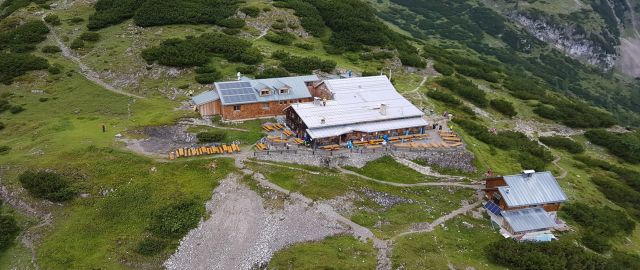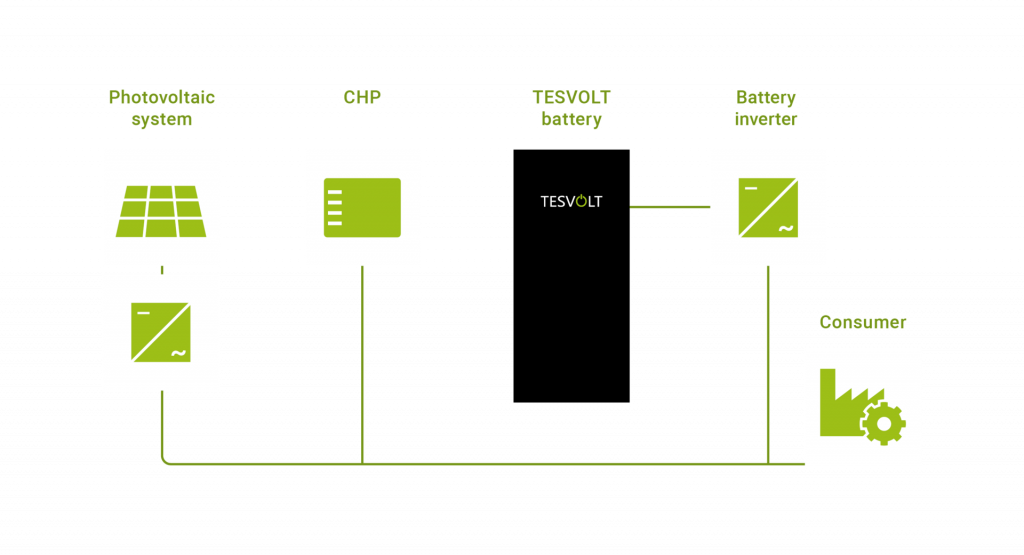Many people enjoy spending time in the mountains and this is also reflected in the increasing number of visitors to Coburger Hütte. The hut’s daily power consumption now lies around 200 kWh in the peak season. Alongside hot water, the kitchen consumes the most energy, with its large industrial dishwashers and freezers. Consumption peaks around lunchtime as the kitchen staff prepare meals and wash dishes.
Even though the photovoltaic installation provides the most energy in the early afternoon, it can’t provide the total energy needed to cover daily consumption, making it necessary for the combined heat and power unit to generate additional energy.
Energy storage units help to distribute the excess solar energy from the early afternoon throughout the rest of the afternoon and evening, and to optimize the CHP unit’s warm-up times. Coburger Hütte previously relied on lead-acid batteries, but, despite high maintenance costs, they wore out after not even ten years of use.
On account of the old lead-acid batteries’ deterioration and a desire to optimize self-consumption, the DAV put out a call for tenders to upgrade the system in the early summer of 2018.
Their requirements for the new system:
- An increase in photovoltaic capacity from 4.4 to 16 kWp, meaning the installation of a new battery with higher charging and discharging power
- Less frequent maintenance, overall greater reliability and durability
- Greater efficiency


 German
German Italian
Italian Dutch
Dutch


 by
by